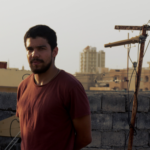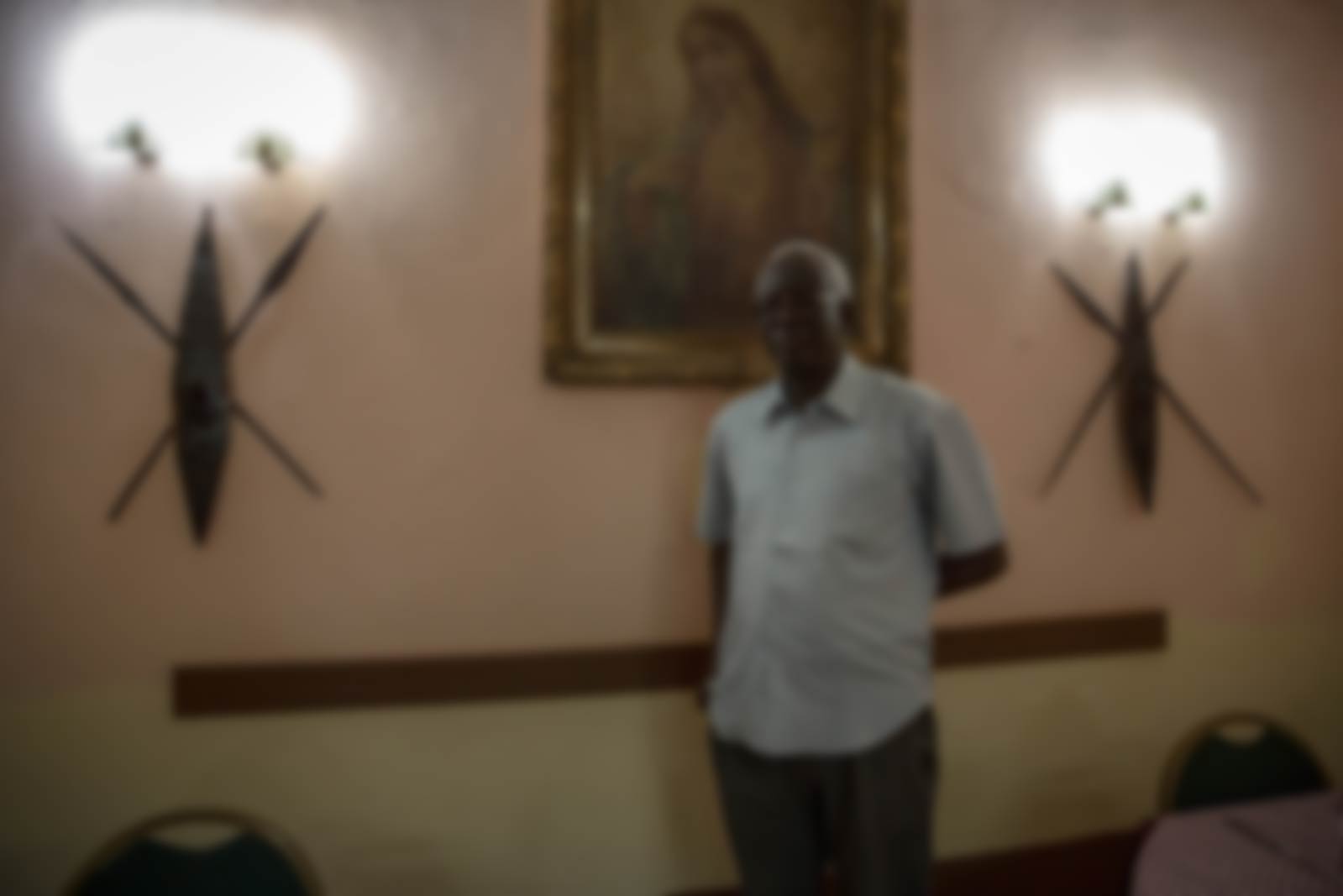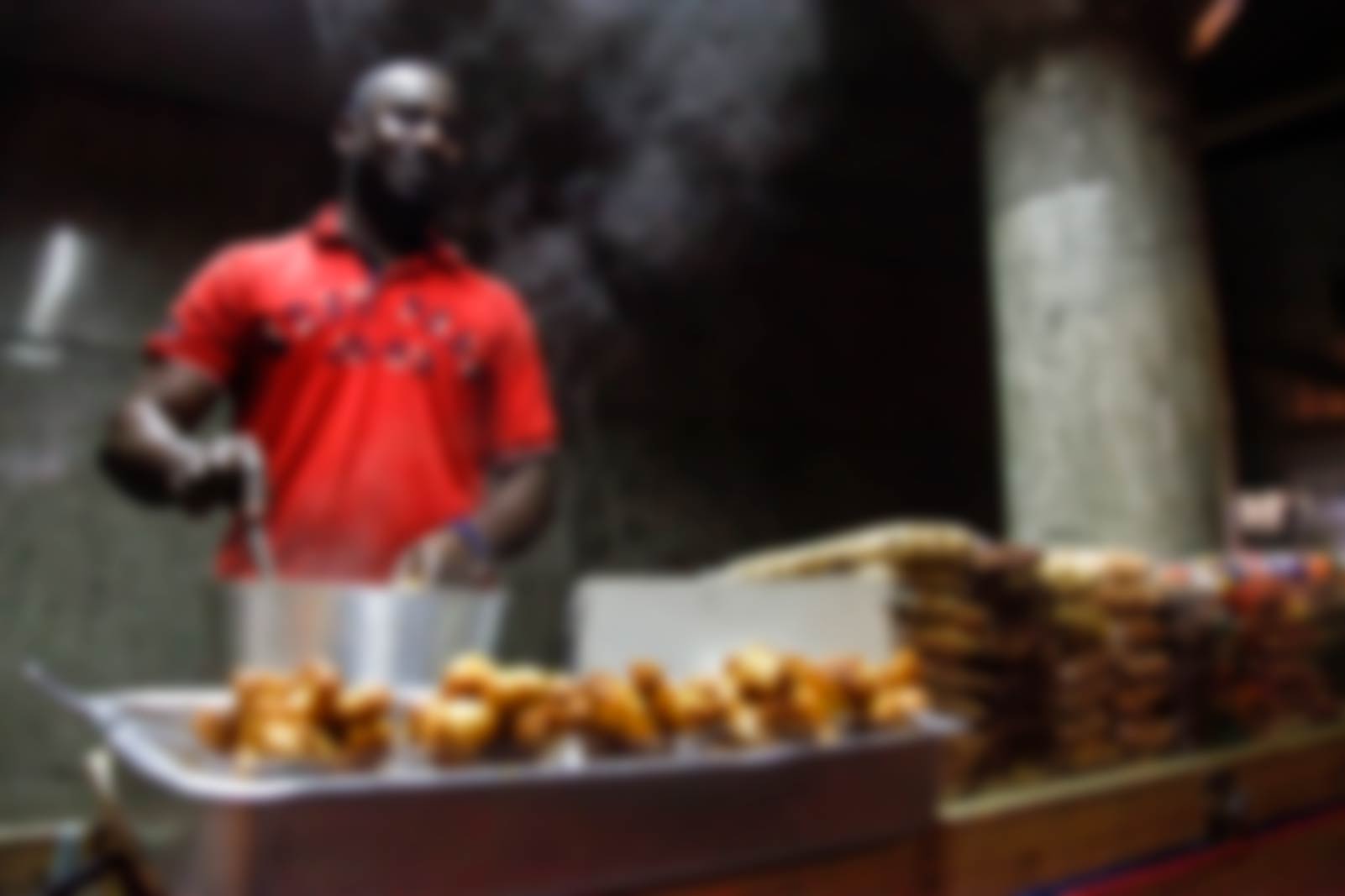The migrant trail to North America is long and dangerous, and asylum increasingly hard to win, so many African migrants searching for new opportunities and challenges in Brazil.
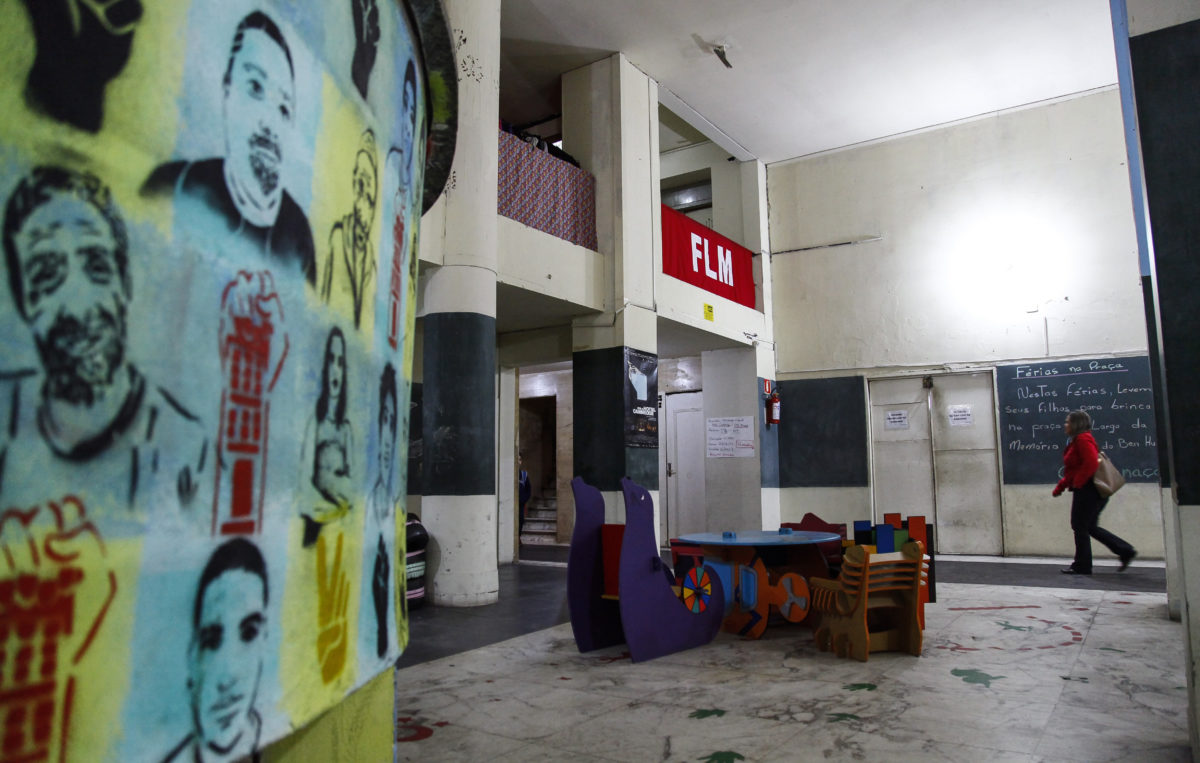
Civil Society Organization Frente de Luta pela Moradia (FLM) supports homeless people in Sao Paulo, including African migrants. The organization has setup headquarters in an abandoned building in downtown Sao Paulo, Brazil, on 04 July of 2017. (Photo by Marcelo Pereira)
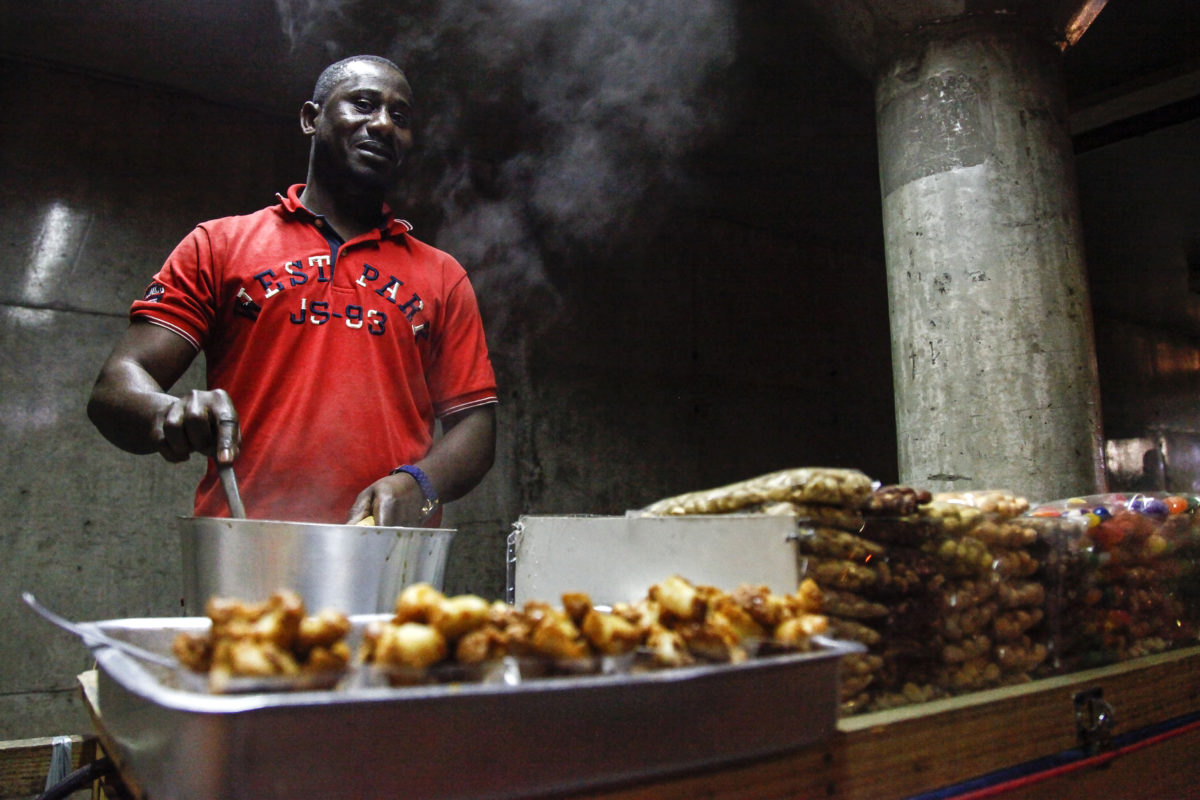
Mamadou from Mali make his living selling food in front of the Guaianazes metro station in Sao Paulo, Brazil, on 05 July of 2017. He learned how to cook traditional Brazilian dishes while working in an improvised kiosk after coming to Brazil 5 years ago - now he owns his own. His wife and son are still in Mali. (Photo by Marcelo Pereira).
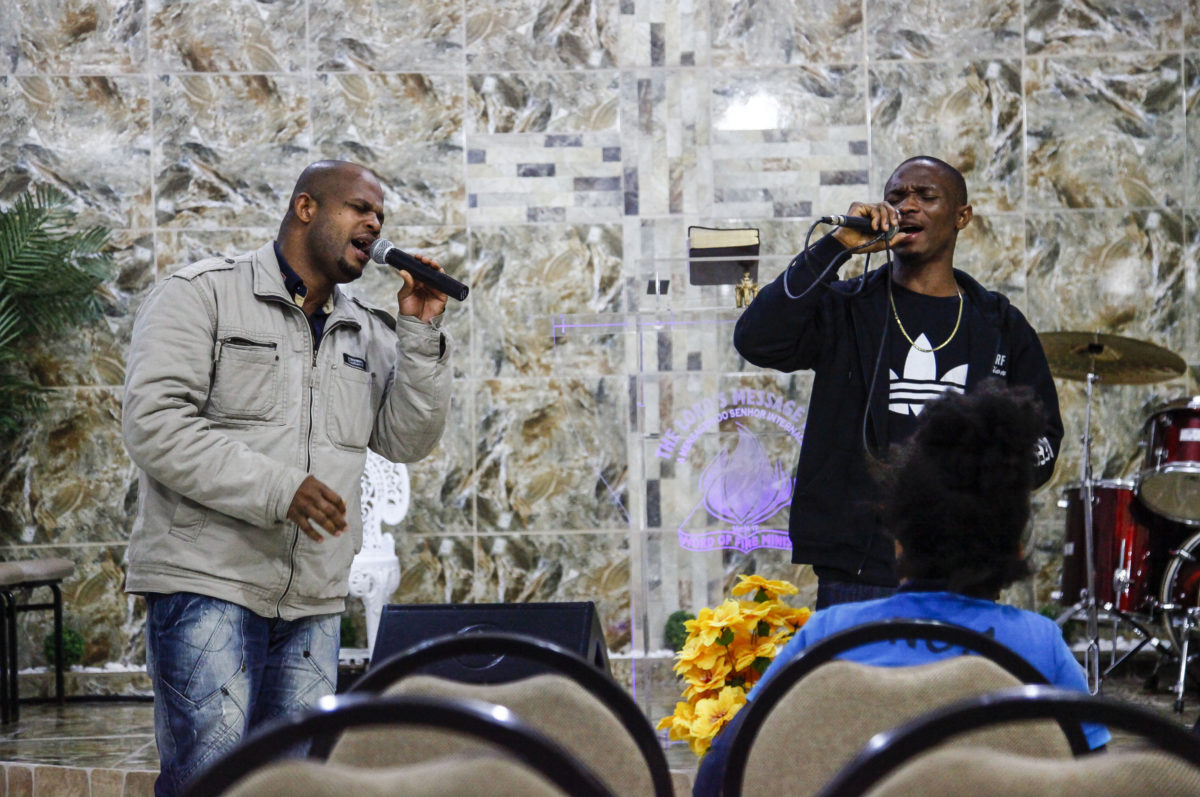
African refugees pray during the service of a Pentecostal Church managed by refugees in Guaianazes neighborhood in Sao Paulo, Brazil, on 05 July of 2017. Pastor Charles told us his ceremonies are often frequented by Nigerian and Congolese migrants - Brazilians step in rarely. (Photo by Marcelo Pereira)
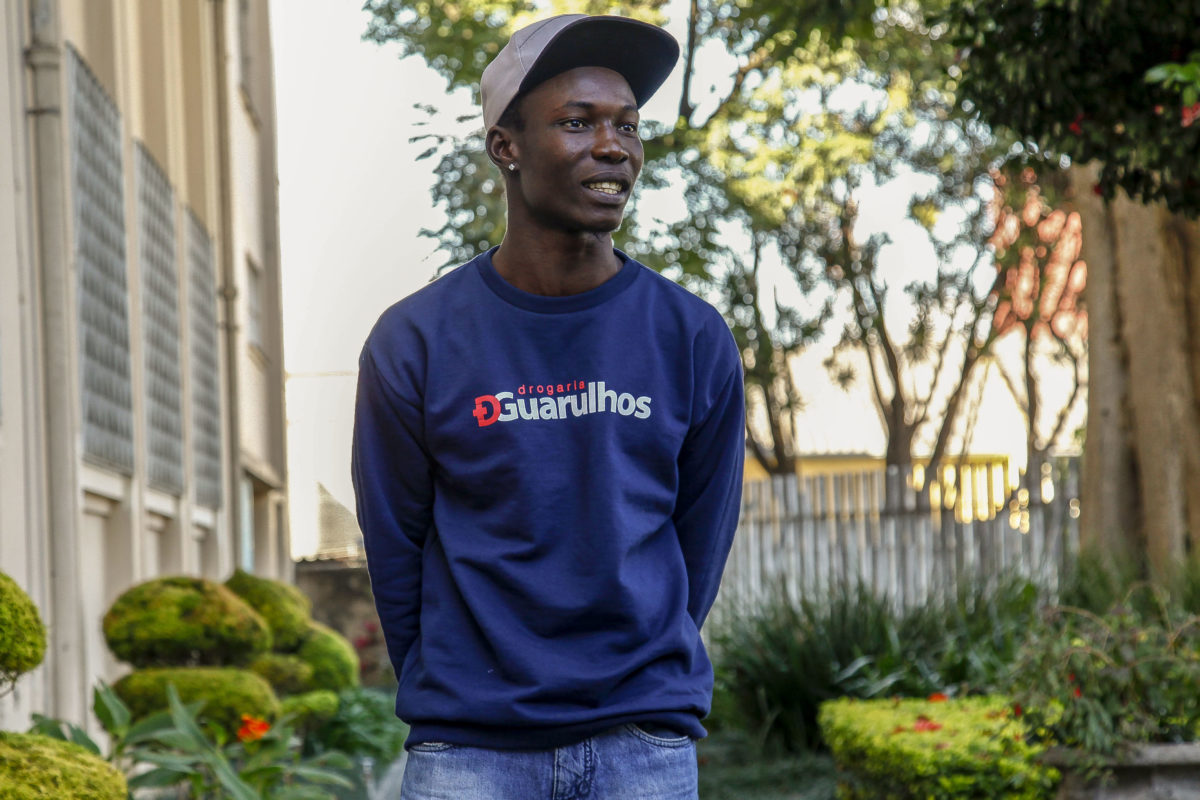
Clement, a Guinean refugee walks outside the Scalabrinian Mission Shelter in Sao Paulo, Brazil, on 05 July of 2017. Clement is living there while prepare to settle if the country. For more profiles of the characters in this story, click here. Photo by Marcelo Pereira.
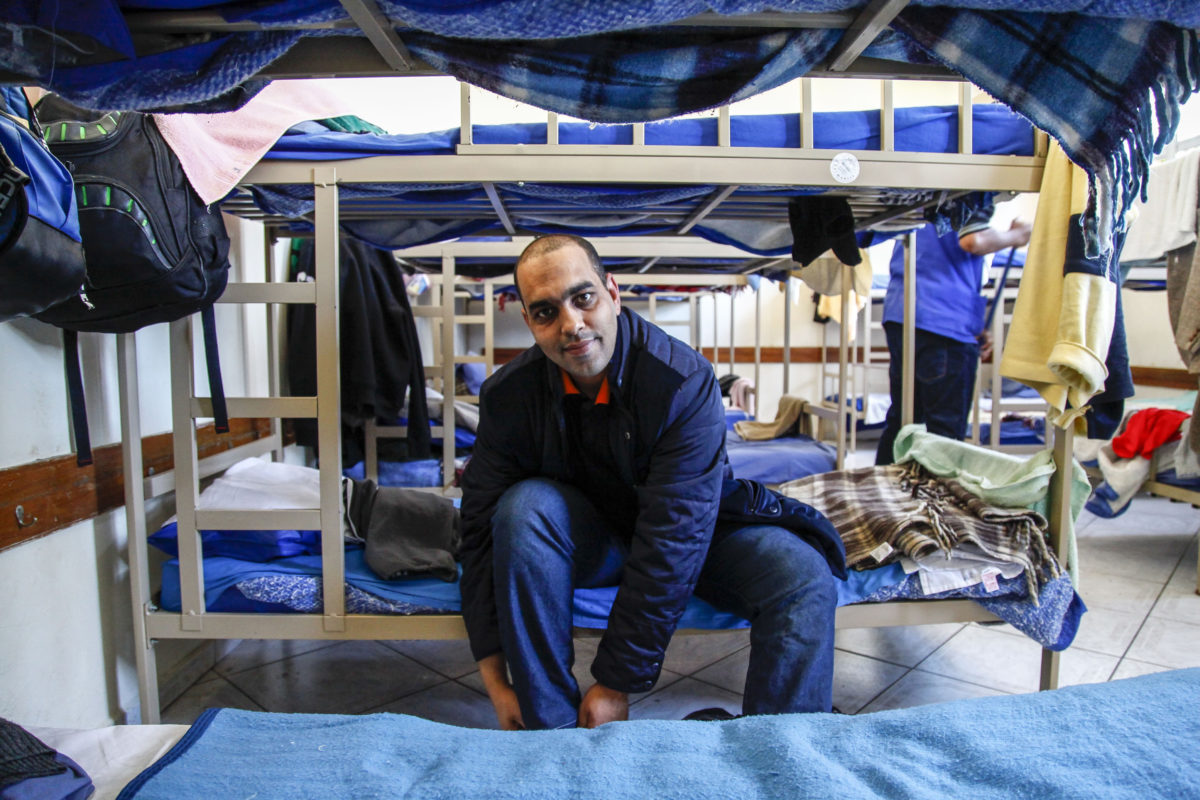
Mohamed Ali, 40, from Morocco, lives in a refugee center of the Scalabrinian Mission in Sao Paulo, Brazil, on 05 July of 2017. Ali is searching for a job to start his life in Brazil. (Photo by Marcelo Pereira)
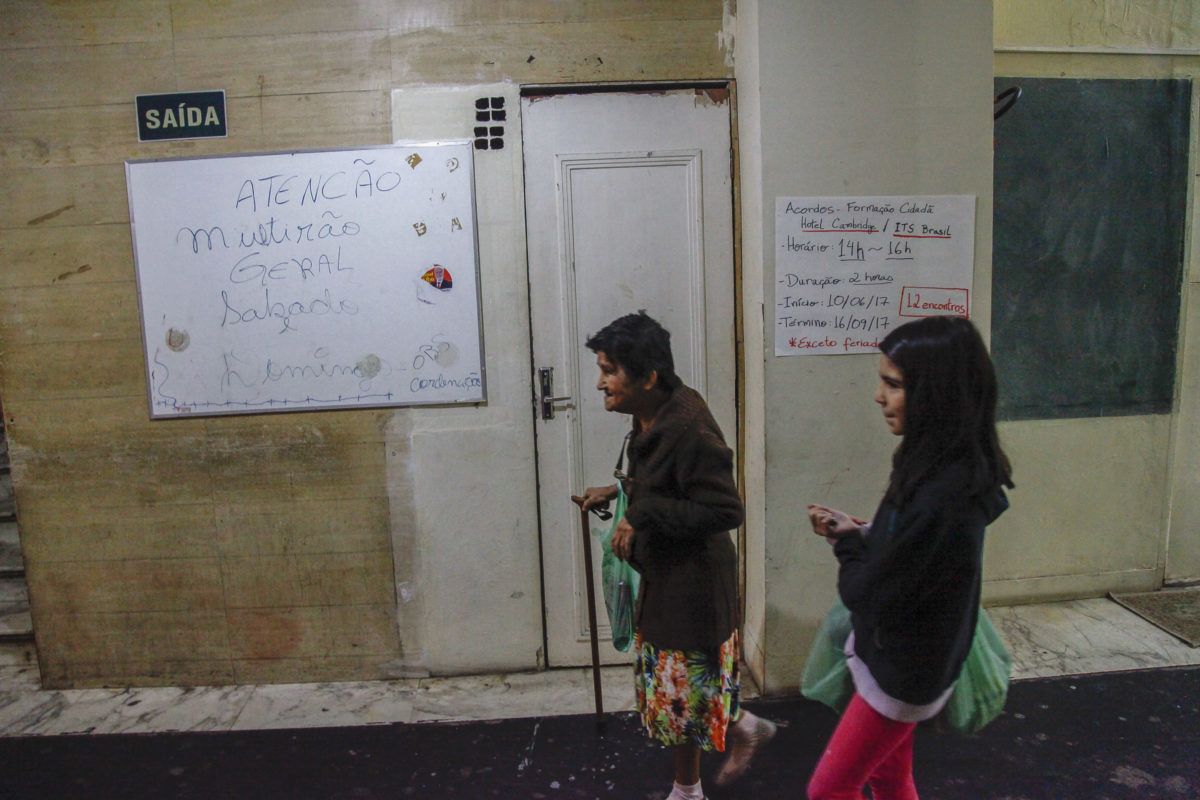
Civil Society Organization Frente de Luta pela Moradia (FLM) supports homeless people in Sao Paulo including African migrants. Hallway from the abandoned building that the organization has setup headquarters in Sao Paulo, Brazil, on 04 July of 2017. (Photo by Marcelo Pereira)
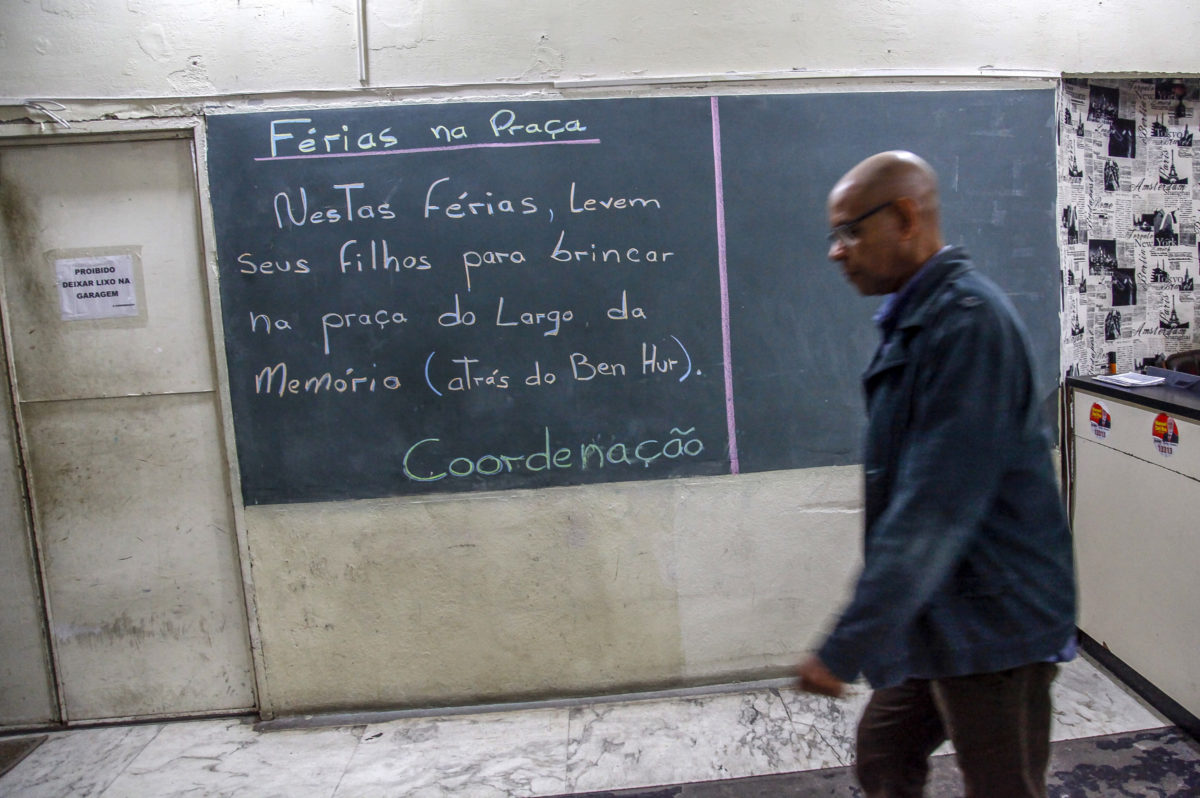
Civil Society Organization Frente de Luta pela Moradia (FLM) supports homeless people in Sao Paulo including African migrants. Hallway from the abandoned building that the organization has setup headquarters in Sao Paulo, Brazil, on 04 July of 2017. (Photo by Marcelo Pereira)
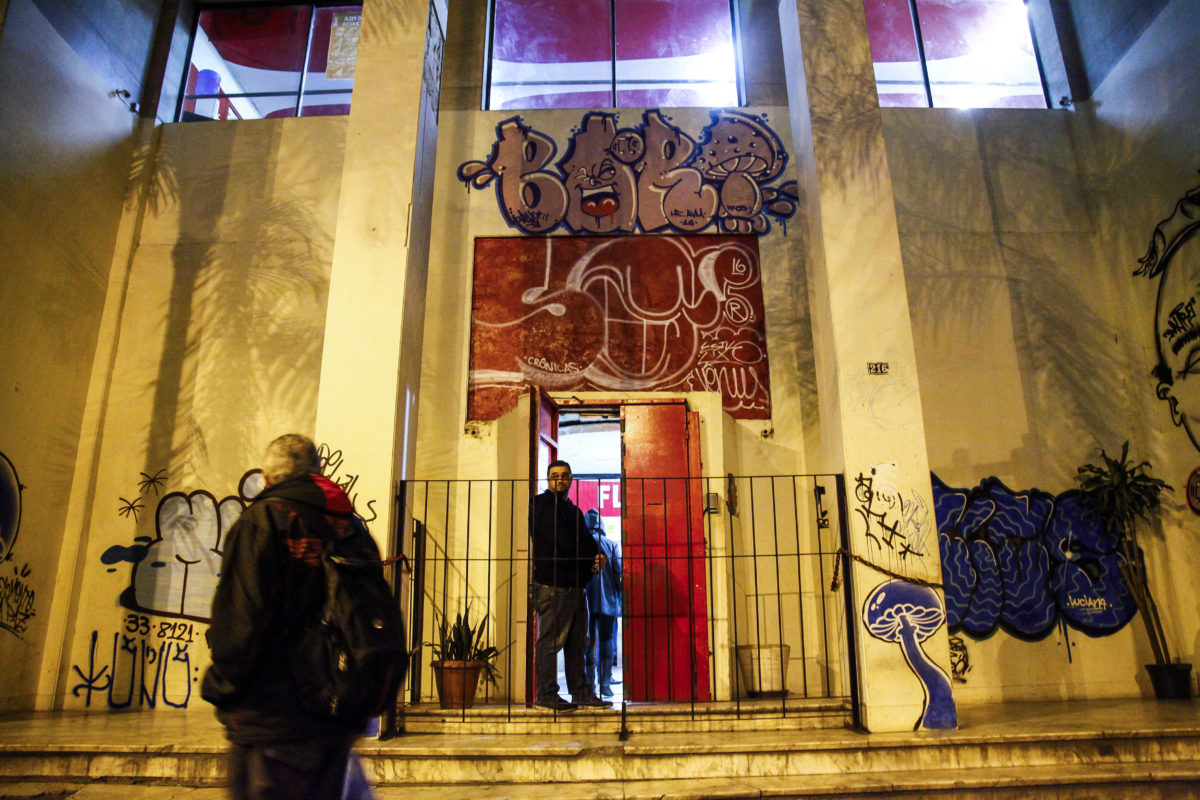
Civil Society Organization Frente de Luta pela Moradia (FLM) supports homeless people in Sao Paulo including African migrants. Entrance to the abandoned building that the organization has setup headquarters in Sao Paulo, Brazil, on 04 July of 2017. (Photo by Marcelo Pereira)

Clement, a Guinean refugee. For more profiles of the characters in this story, click here. Photo by Marcelo Pereira.
“Here I can at least walk free.”
Fitah, 32-year-old Somalian refugee
When violence in the Congo became unbearable, Afonso decided it was time to pack his bags.
He found a group of smugglers and escaped Kinshasa on a cargo ship with a handful of other migrants. As the boat left Africa, it headed went West, not north to Europe.

Civil Society Organization Frente de Luta pela Moradia (FLM) supports homeless people in Sao Paulo, including African migrants. The organization has setup headquarters in an abandoned building in downtown Sao Paulo, Brazil, on 04 July of 2017. (Photo by Marcelo Pereira)

Mamadou from Mali make his living selling food in front of the Guaianazes metro station in Sao Paulo, Brazil, on 05 July of 2017. He learned how to cook traditional Brazilian dishes while working in an improvised kiosk after coming to Brazil 5 years ago - now he owns his own. His wife and son are still in Mali. (Photo by Marcelo Pereira).

African refugees pray during the service of a Pentecostal Church managed by refugees in Guaianazes neighborhood in Sao Paulo, Brazil, on 05 July of 2017. Pastor Charles told us his ceremonies are often frequented by Nigerian and Congolese migrants - Brazilians step in rarely. (Photo by Marcelo Pereira)

Clement, a Guinean refugee walks outside the Scalabrinian Mission Shelter in Sao Paulo, Brazil, on 05 July of 2017. Clement is living there while prepare to settle if the country. For more profiles of the characters in this story, click here. Photo by Marcelo Pereira.

Mohamed Ali, 40, from Morocco, lives in a refugee center of the Scalabrinian Mission in Sao Paulo, Brazil, on 05 July of 2017. Ali is searching for a job to start his life in Brazil. (Photo by Marcelo Pereira)

Civil Society Organization Frente de Luta pela Moradia (FLM) supports homeless people in Sao Paulo including African migrants. Hallway from the abandoned building that the organization has setup headquarters in Sao Paulo, Brazil, on 04 July of 2017. (Photo by Marcelo Pereira)

Civil Society Organization Frente de Luta pela Moradia (FLM) supports homeless people in Sao Paulo including African migrants. Hallway from the abandoned building that the organization has setup headquarters in Sao Paulo, Brazil, on 04 July of 2017. (Photo by Marcelo Pereira)

Civil Society Organization Frente de Luta pela Moradia (FLM) supports homeless people in Sao Paulo including African migrants. Entrance to the abandoned building that the organization has setup headquarters in Sao Paulo, Brazil, on 04 July of 2017. (Photo by Marcelo Pereira)
Afonso worked on the ship to pay his passage. Two weeks later he was in the Brazilian port city of Santos, north of Sao Paulo.
Afonso is unusual: Most of the transcontinental migrants landing in the Americas avoid the ocean, opting instead for a visa+flight+lodging package that safely deposits them in South America’s biggest cities.
Afonso is part of a wave of African and Middle Eastern migrants opting for the Americas, mindful of the violent gangs that run the European route, and the tens of thousands who’ve died trying to cross the Sahara Desert and Mediterranean Sea in recent years.
Soror Eva Souza, director of the Scalabrinian Mission in Sao Paulo, a charity that helps refugees and foreign migrants, says she has recently helped people from Angola, Cambodia, Congo, Egypt, Guinea and Morocco, as well as Nigeria, Togo, Tunisia and Syria.
In 2003 former Brazilian president Lula da Silva forged a refugee policy oriented towards south-to-south cooperation. This made Brazil an important player in dealing with displaced people.
That led waves of migration: Palestinians in 2007, Syrians in 2014, and Haitians after their country’s devastating earthquake. But it’s also led to a rise in African, Asian and Middle Eastern migrants and asylum seekers.
According to official statistics in 2010, Brazil received just 966 asylum requests. Five years later the number had shot up to 28,670. Many were Haitians, but immigration officials saw sharp increases in the number of people coming thousands of miles, from Africa and the Middle East.
Not everyone was welcome. Of 74,794 asylum requests received since 2010, Brazil had officially recognized only 8,863 by 2016. Civil society organizations said many of the rejected have ended up staying in Brazil, illegally, or using the country as a starting point for a journey deeper into the Americas.
In 2015, according to the ministry of Tourism, 110,983 African travelers came to the country, mostly from South Africa, Angola, Cape Verde, Morocco, Tunisia and Nigeria. The majority flew into Sao Paulo, official statistics show 1,366 people from the African continent crossed into Brazil by land (mostly through Paraná on the southern border and through the great northern border states of Amapa, Roraima, Amazonas and Acre.) At least 125 arrived by sea.


Clement, a Guinean refugee. For more profiles of the characters in this story, click here. Photo by Marcelo Pereira.
The Brazilian Boom
Fueling the rush to Brazil was it’s emergence as a world economic powerhouse. There was a building boom ahead of the 2010 World Cup and the 2016 Olympic Games, and financial optimism was fostered by former presidents Lula and Dilma Rousseff.
Within Brazil, there was nowhere more attractive than Sao Paulo: a megalopolis of more than 20 million people, Brazil’s financial capital and one of the richest cities in the world. They city became a major destination for international migrants. Almost half of the city’s residents are foreign-born.
Although Brazil’s economic outlook has since deteriorated – with a financial crisis since 2015 – the migrant flow remains strong. Many said that even in a downturn, they are better off in the Americas than in their home countries.
Lalingé, a Senegalese restaurant in Sao Paolo’s bustling Centro neighborhood, attracts migrants from all around the African continent. They gather to talk, do business, relay the latest news from home – and, of course, share the foods they knew back home.
In nearby República Square, where many Senegalese migrants work as street vendors, the square becomes a community party at night. Sound systems blare traditional African songs and talk of the home country fills the air.
Carmem Silva, who leads the Frente de Luta por Moradia, a civil society organization helping homeless people in Sao Paulo, said most people seeking the group’s help are migrants or asylum seekers, and that around 20 per cent arrive in Brazil thinking about moving elsewhere – mainly to the US. The majority, however, plan to stay in Brazil.
Fitah, a 32-year-old Somalian refugee, was among those hoping to use Brazil as a stepping stone to head north to the United States. He landed in Sao Paulo after paying smugglers in Johannesburg $4,000 for fake papers. He was told he had to choose between Brazil or Turkey, as prices vary according to gender, age and destination. Disillusioned by US President Trump’s attempt to impose a travel ban on migrants from Somalia and other countries, he now just wants to stay in Brazil, saying, “Here I can at least walk free.”
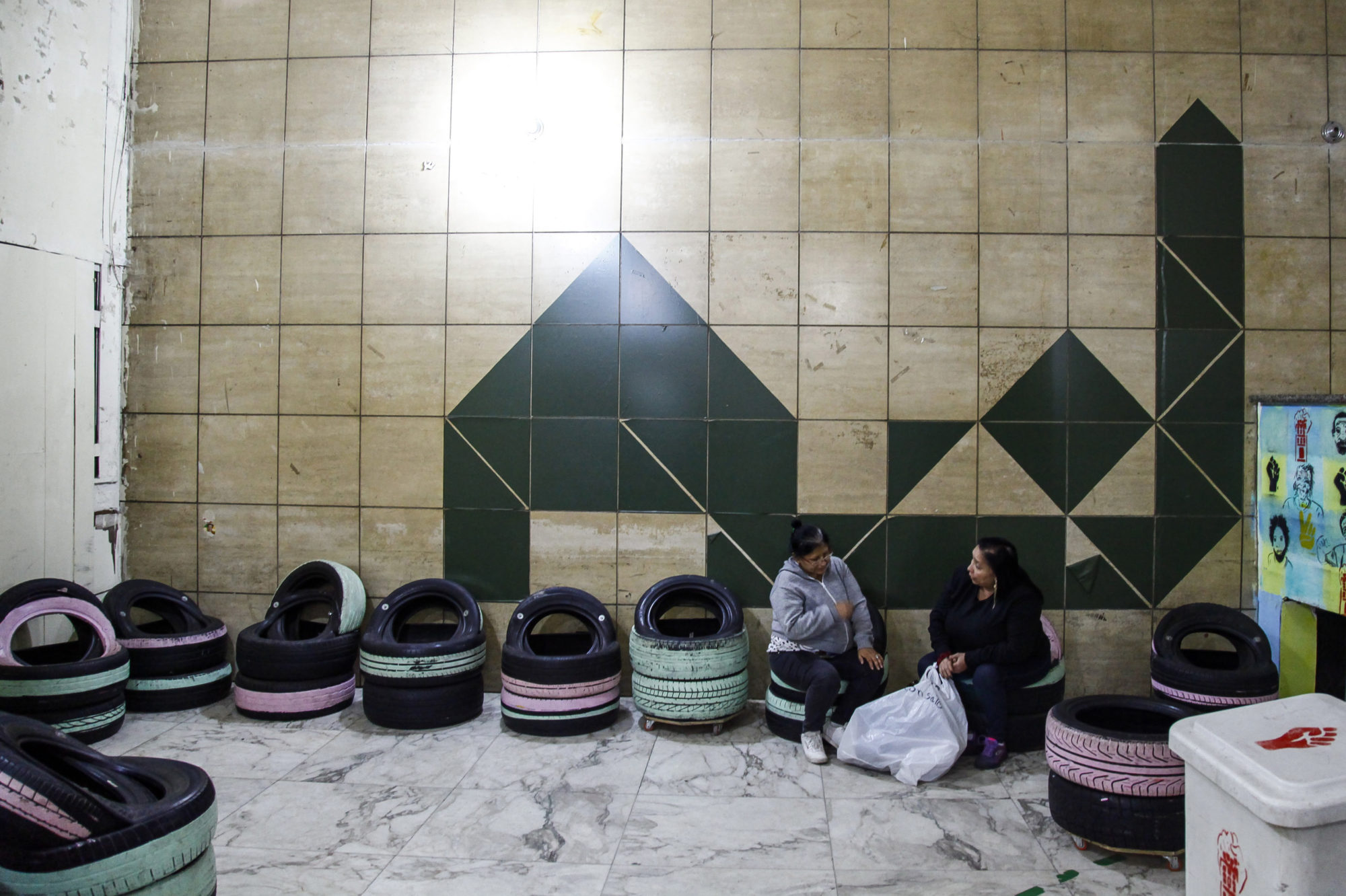
“Here I can at least walk free.”
Fitah, 32-year-old Somalian refugee
Corruption en route
Those coming from Africa usually travel by plane and enter Brazil legally without the help of coyotes, thanks to Brazil’s open migration legislation. However, the route is not without its own problems, and many migrants hire “agencies” in their home countries that pledge to “facilitate the process.” For some, gathering necessary documents and an agent can cost thousands of dollars.
A Brazilian Federal Police official, who spoke on condition of anonymity, said that entries of migrants – especially from Africa – are agreed upon with corrupt border officials who hold onto hundreds of passports, and – for extra cash — stamp piles of documents during quiet night shifts.
Migrants are also extorted, he claims, when Customs employees don’t stamp the migrants passports but instead note the Brazilian addresses of new arrivals. Months later, they knock on their doors and ask for money, threatening to report them to the authorities.
But corruption also begins at home. In 2010, an Angolan diplomat said that a significant number of identity documents requests made at their Embassy in Kinshasa, Congo, were actually made by Congolese migrants posing as Angolans. One Angolan migrant, “H”, who currently lives in a run-down Sao Paulo neighborhood just beside a “boca de fumo” – an open drug dealing spot – also said many Angolan migrants bribe African border officials for documents. The migration trail through Africa starts locally: those running away from the security crisis in Congo for example, first go to Angola before crossing the Atlantic.
“In 40 years, (people born now) will be able to manage this country. With education, respect and knowledge,” said the immigrant Abu. “The richness you have in Brazil, nobody has. I love Brazil more than many Brazilians. I’m Brazilian until the day I come back to my country.”
Eduardo Botelho contributed to this story.


